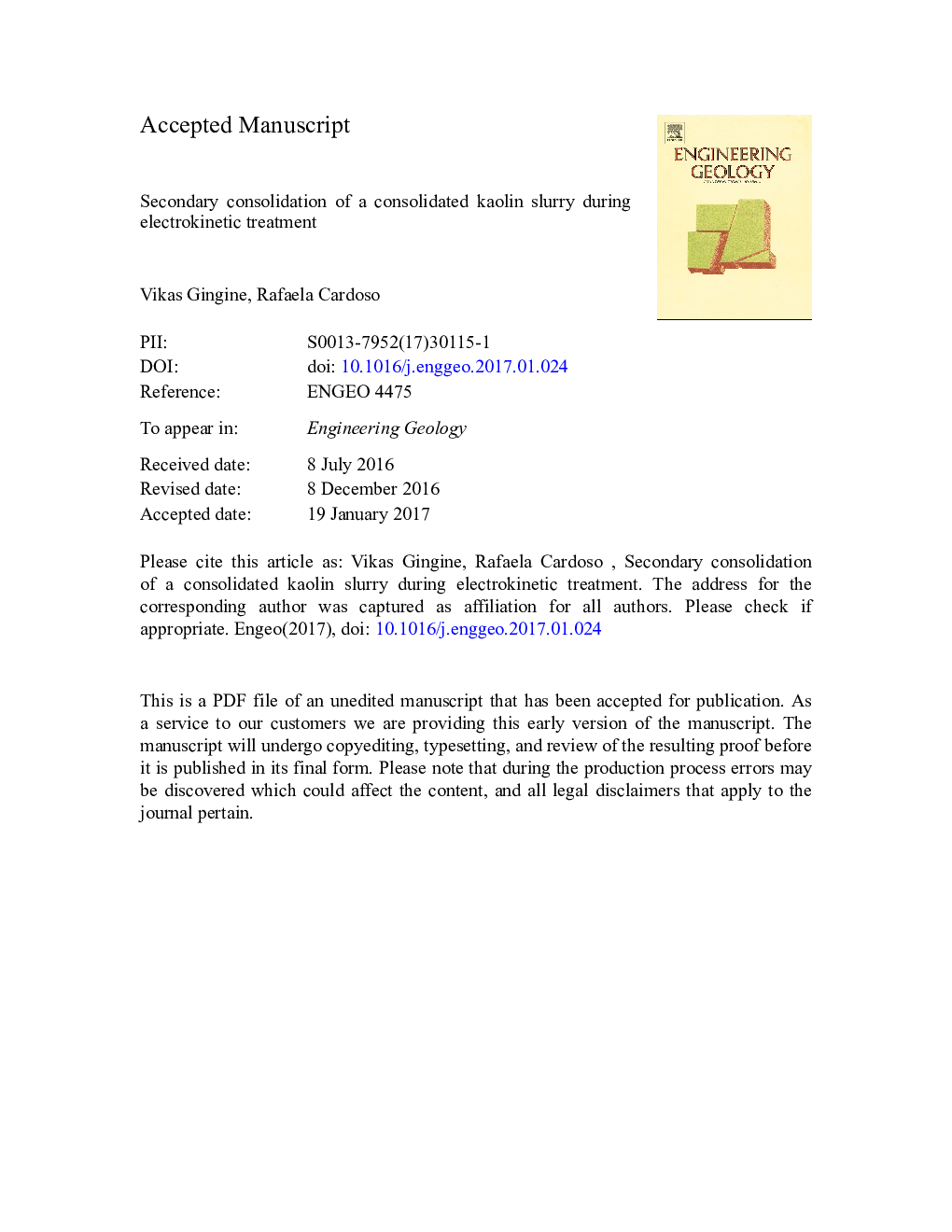| Article ID | Journal | Published Year | Pages | File Type |
|---|---|---|---|---|
| 5787587 | Engineering Geology | 2017 | 44 Pages |
Abstract
The increment of secondary deformations due to electrokinetic treatment (EKT) was studied considering that these deformations are associated to the mobilization of the water adsorbed by the clay minerals. This water is at the level of microstructure, and therefore volume changes occur while water is flowing from the micro to the macropores. Water transference can be explained based on the unbalance of the chemical potentials of microwater (at the surface of the clay minerals) and bulk water. Electrical potential increases this transfer of water, increasing the rate of secondary consolidation and therefore increasing the deformations. The comparison of secondary consolidation coefficients measured in consolidated kaolin slurry samples with and without electrical potential applied only during secondary consolidation made possible to understand that the flow due to electrical gradients appeared to be independent from the vertical stresses applied, unlike the flow due to hydraulic gradients. Under the same stresses, however, the application of electric current increases the amount of creep. Considering the total duration of each loading step, the electrical potential increased the elastic compressibility index defined at the level of the microstructure, but almost had no effect on global compressibility. This increment in the compressibility was explained by the mobilization of adsorbed water reducing repulsive forces between the clay minerals. A deeper knowledge of the electro-hydro-mechanical behaviour of clays will be useful for optimizing in-situ application of EKT in terms of its duration and consequences.
Related Topics
Physical Sciences and Engineering
Earth and Planetary Sciences
Geotechnical Engineering and Engineering Geology
Authors
Vikas Gingine, Rafaela Cardoso,
